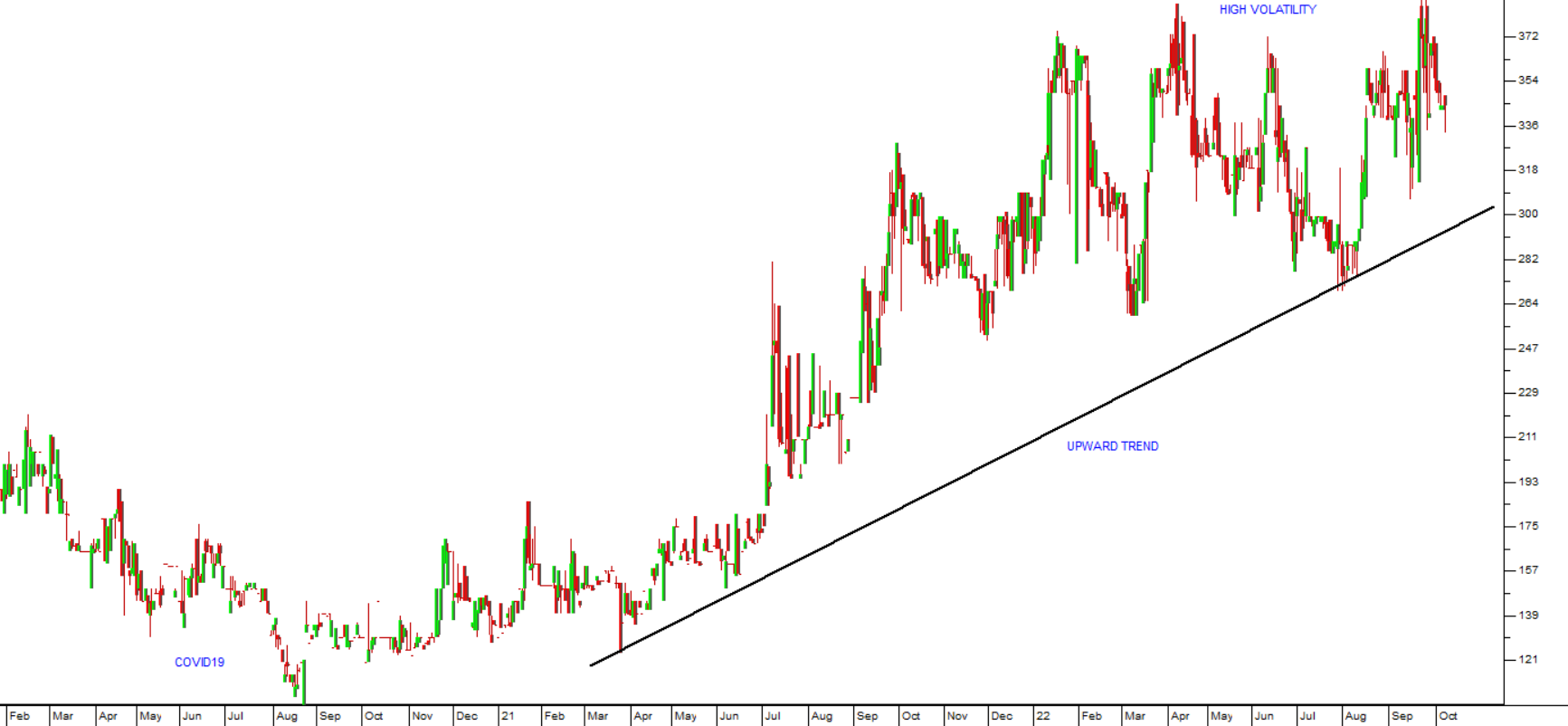Gemfields
10 October 2022 By PDSNETGemfields (GML) produces and sells semi-precious stones, mainly rubies from Mozambique and emeralds from Zambia. They are the largest producer of these stones in the world. Their subsidiary, Kagem, produces about 25% to 30% of the world’s emeralds. In addition, they own Montepuez in Mozambique which produces rubies.
Their stones are mostly marketed through auctions where jewellery companies bid for specific stones and collections online. They recently acquired Faberge which is an international icon in the production of luxury jewellery best known for the 52 Imperial eggs produced for the Russian Imperial family between 1885 and 1917.
Gemfields has revived and continued the tradition of producing eggs with the recent production of the Game of Thrones dragon egg valued at $2,2m. It is described as “...replete with diamonds, 18-karat white gold, and fine enamelling”.
The company does most of its mining in low-cost open-pit operations. It has none of the complications, costs, and risk of an underground operation. Its margins are particularly good, running at over 40%.
Its mines are located in Africa which implies some additional risk. For example, the ruby mines in Mozambique are subject to both illegal mining and the potential danger of insurgent attacks.
In both Mozambique and Zambia, the government owns a substantial stake in the operations (20% - 25%) and operations are subject to tax of 32% in Mozambique and 30% in Zambia. Gemfields had an overall effective tax rate of 33% in its most recent financial period.
In its recent results for the six months to 30th June 2022 the company reported revenue up 98,7% and earnings before interest, taxation, depreciation, and amortisation (EBITDA) up 141%. This followed record revenue from the various auctions which it organised. The after-tax profit jumped from $23,7m a year ago to $56,7m. If the second half of the year is as good as the first, then it will make after-tax profit of over R2bn per annum. Given that at the current price it has a market capitalization of R4,16bn that makes the company extremely profitable and the shares very cheap.
Of course, strictly speaking this is a commodity share – and commodity shares are notoriously volatile. However, Gemfields operates in niche markets where it has considerable market influence. Obviously, its sales are essentially a complete luxury which the wealthy people of the world indulge in. That market may be under threat if the world is moving into a global recession.
The market for these semi-precious stones is unlike the precious metals market or even the diamond market. It is much smaller and more specialized. This probably accounts for some of the share’s volatility.
Technically the share is in a strong upward phase following the COVID-19 downward trend. Consider the chart:

You can see here that COVID-19 had an impact on this share and took it down to its low point of 115c per share in August 2020. Since then, it has been moving up steadily and now trades for 345c – a 200% gain in two years. The share has become very volatile, but it does have some institutional investors – most notably, the asset manager Ninety One owns a 5,84% interest.
Even after its meteoric rise over the past two years and allowing for its inherent risks, the company seems cheap on fundamentals. It also seems to have substantial growth potential as it enters new markets and uses Faberge to market very high-quality collectors’ products directly to discerning buyers.